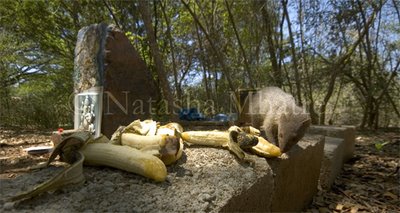Quick post about why a good wide is a MUST for a wildlife photographer
Animals live in some kind of environment and sometimes you want to depict that relationship in an image. Often however the problem is that the elements of the that environment, in which the animals is situated are much larger than the animal itself.
And any image that has both in the same shot if its made with a conventional mid-range to long tele is going the compress the tiny animal against a grand huge background. this your standard too tiny in the frame animal. mind you, that you can choose to show only some part of that environment and let the rest suggest itself as 'more of the same'. Here's an example.

Fairly informative. Pond herons roost on dead trees. But it will by its very nature leave out something. for instance that this particular dead tree is next to a pond. If you try and include the pond in the pict by zooming out. well the heron become smaller....and the pond becomes the picture....
So if you want a landscape feel to your image, want to give a feel of the WHOLE area, and yet want to have your animals at a size thats noticable, try a wide.
Whats a wide allows you to do, is create a perspective that the human eye does not normally have. It makes objects closer to it much larger than those further away.
(link to get you to understand this.)
so now if you can manage to get close to your animal and have all your landscape elements neatly organised behind the animal, voila animal elements all similar sizes managing equal amounts of attention.....

easier said than done, lets see you get a couple of inches from this mongooses nose!
No comments:
Post a Comment